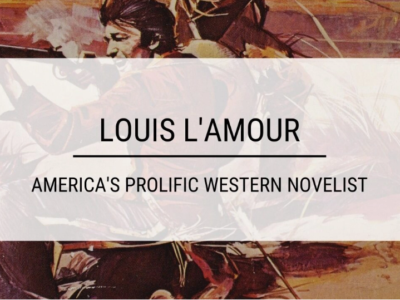Introduction to ‘i Bomma One’
Contents
When you hear the term ‘i Bomma One,’ what comes to mind? For many, it evokes a sense of cultural pride and identity. But this phrase goes beyond mere words; it holds deep meaning and significance in various contexts. From its historical roots to its modern applications, ‘i Bomma One’ has woven itself into the fabric of society, influencing how people connect with their heritage.
In an increasingly fast-paced world, understanding concepts like ‘i Bomma One’ is crucial for appreciating our past while navigating the present. Join us as we explore what makes ‘i Bomma One’ so important and why it continues to resonate today.
The Meaning and Significance of ‘i Bomma One’
‘i Bomma One’ embodies a rich cultural tapestry, resonating deeply within various communities. Its meaning transcends mere words; it represents unity and connection among people.
The phrase often evokes feelings of nostalgia and identity. It serves as a reminder of shared experiences that bind individuals together.
In many cultures, ‘i Bomma One’ symbolizes resilience and hope. It encourages collective action for positive change, inspiring social movements across different regions.
Moreover, its significance extends beyond tradition—it adapts to modern contexts too. As society evolves, so does the interpretation of ‘i Bomma One,’ keeping its essence alive while making it relevant for future generations.
This multifaceted nature ensures that ‘i Bomma One’ remains an integral part of conversations about culture, community, and empowerment.
History of ‘i Bomma One’
The origins of ‘i Bomma One’ trace back to the rich cultural tapestry of South India. Rooted in local traditions, it emerged as a unique expression that resonates with various communities.
Initially, ‘i Bomma One’ served as a playful term within folklore and storytelling. It captured the essence of vibrant festivals and family gatherings where tales were shared over generations.
As time progressed, this phrase evolved beyond its folkloric beginnings. It found its way into mainstream entertainment, making appearances in music and cinema. Artists began incorporating ‘i Bomma One’ into their work, enhancing its popularity.
In contemporary times, it has become synonymous with joyful celebration. The phrase is frequently used in social media posts and memes, connecting younger audiences to traditional themes while fostering community spirit among diverse groups.
How ‘i Bomma One’ Is Used in Modern Times
‘i Bomma One’ has found its way into the contemporary cultural landscape, resonating with various demographics. It is not just a phrase; it represents a movement and an identity for many.
In modern social media, is often used as a means of expression. Influencers and creators incorporate it in their content to connect with followers on deeper levels. Hashtags surrounding this term frequently trend across platforms, showcasing its relevance.
Moreover, local events celebrate ,’ bringing communities together through music and art. These gatherings foster creativity while allowing individuals to share their stories.
Businesses have also begun leveraging in marketing campaigns. This approach appeals to consumers who value authenticity and community engagement over conventional advertising methods.
This evolving usage illustrates how ‘i Bomma One’ adapts while maintaining its core significance within society today.
The Impact of ‘i Bomma One’ on Society
The impact of ‘i Bomma One’ resonates deeply within various layers of society. This phenomenon has become a cultural touchpoint that brings communities together, bridging generational gaps.
Through social media, the essence of spreads rapidly, influencing trends and lifestyles. It fosters creativity and encourages individuals to express themselves in unique ways.
Moreover, it plays a crucial role in discussions about identity and belonging. Many find solace in its representation of their experiences, leading to heightened awareness around cultural issues.
The influence extends into art and entertainment as well. Artists draw inspiration from , producing works that reflect contemporary societal themes while paying homage to tradition.
This concept is more than just a passing trend; it’s a movement that shapes attitudes and connects people on deeper levels.
Criticisms and Controversies Surrounding ‘i Bomma One’
Critics of ‘i Bomma One’ often point to its commercialization. They argue that the essence gets lost when it becomes a product for mass consumption. The initial cultural significance might fade as it morphs into something more commercial.
Furthermore, some believe that the portrayal in media doesn’t accurately reflect its roots. This disconnection can lead to misunderstandings about what ‘i Bomma One’ truly represents within various communities.
Controversies also arise over differing interpretations. These variations can spark debates among enthusiasts and scholars alike, creating factions rather than unity around this concept.
Social media has amplified these discussions, sometimes leading to heated exchanges between supporters and detractors. In an age where public opinion shifts rapidly, remains a polarizing topic with passionate viewpoints on both sides.
Conclusion: The Everlasting Relevance of ‘i Bomma One’
The significance of continues to resonate across various spheres of life. Its historical roots and cultural importance make it a subject worthy of discussion. As society evolves, so do the interpretations and uses of this concept, adapting to modern challenges while retaining its core values.
Despite facing criticism and controversy over the years, ‘i Bomma One’ has proven its resilience. It remains a vital part of conversations around identity, community, and social responsibility. The impact it has on individuals and groups alike showcases its capacity for fostering connection and understanding.
As we navigate an ever-changing world, the relevance of ‘i Bomma One’ is undeniable. It’s not just a phrase or idea; it’s a bridge linking generations past with those present—and future—ensuring that what it represents will endure through time.
















